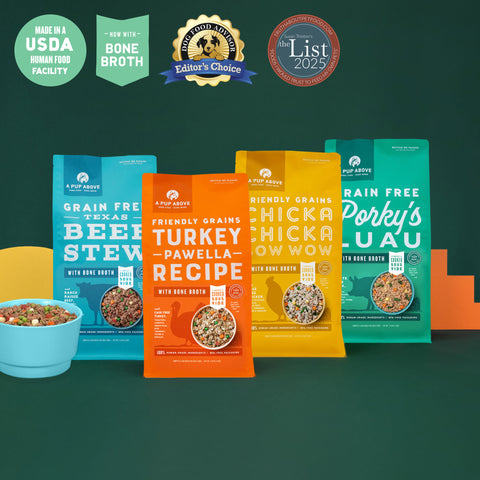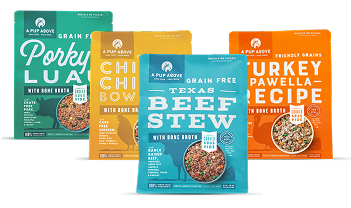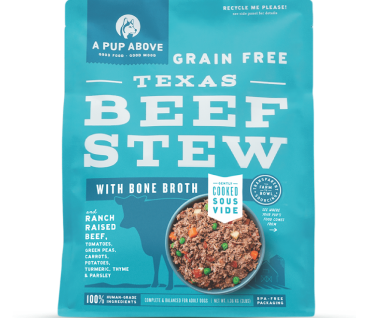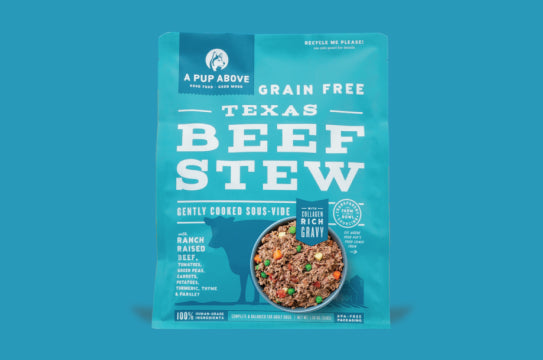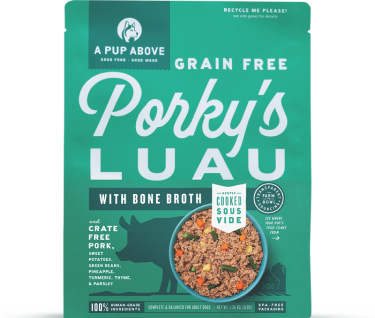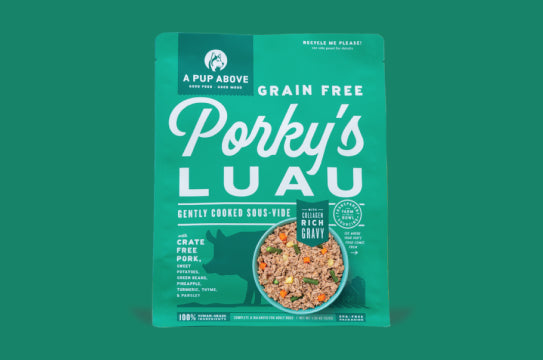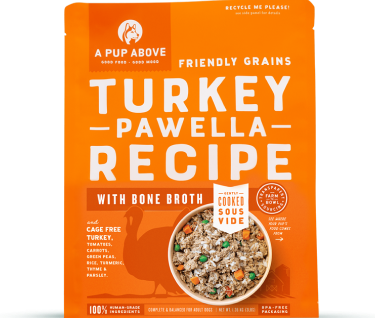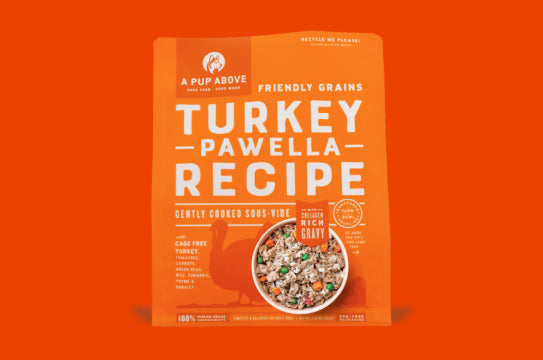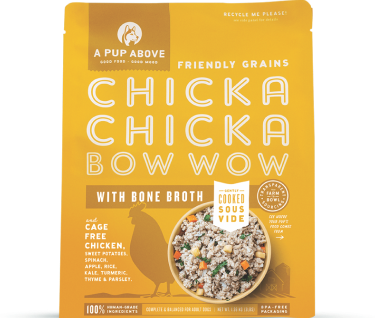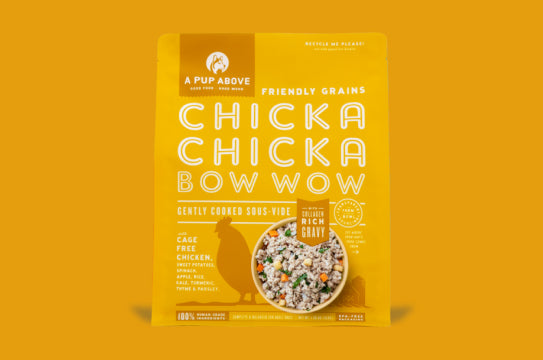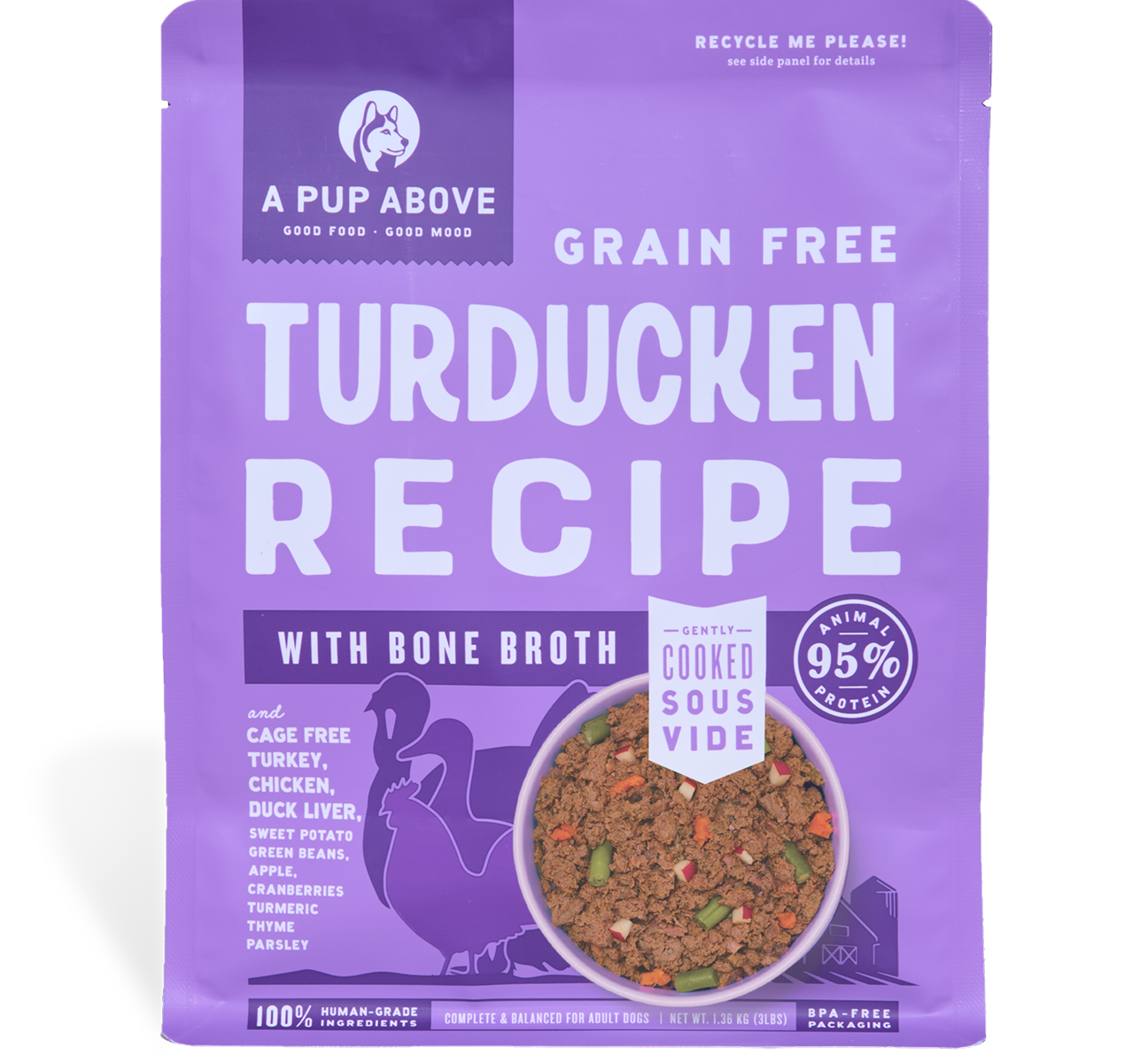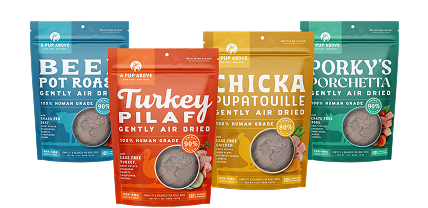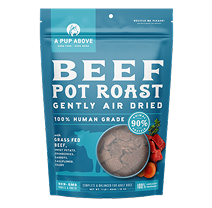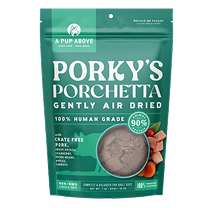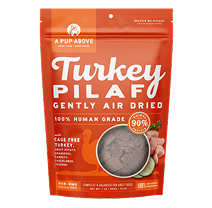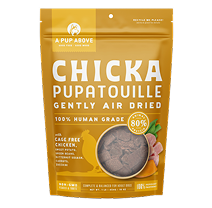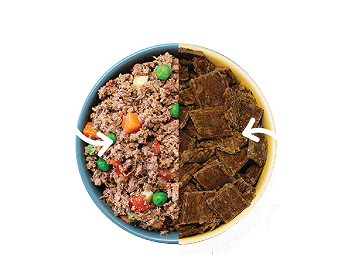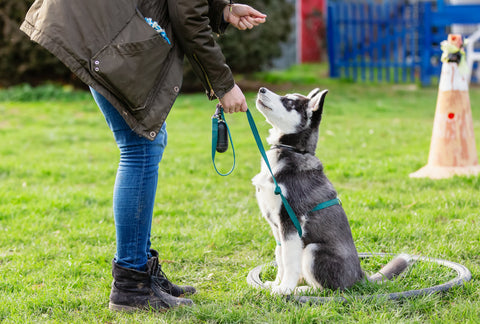
Dog food ingredient lists explained: The good, the bad, and the ugly
Are you a reader of ingredients lists? If you’ve tried to parse the tiny type and multisyllabic words that tell you the ingredients in dog and human food alike, you’ll know it can be confusing. And possibly alarming.
But when you’ve got a sweet doggy friend who depends on you to figure out what to feed them, you need to know what dog food ingredients to look for, and which to avoid.
The good news is that the best dog food ingredients are easy to pronounce and recognize. But if you aren’t familiar with spying out the bad stuff, it’s easy to get frustrated and lost.
To help you evaluate the best dog food ingredients for your special pet, we’ve compiled a list of 5 top tips to help you decode the information.
Tip #1: Focus on simple quality
Dog food labels should be simple to read, at least when it comes to the top listed items. If you can’t easily pronounce the first four ingredients, chances are you should choose something else — a great guideline to follow in your own diet, too.
For the most part, dog food ingredients are listed in descending order of quantity by weight. Meaning, the higher up the item is in the list, the more of that ingredient there is in the food. The first 6 ingredients typically make up the majority of the food.
Given that our pups are carnivores, the first two ingredients should be meat. It’s also best to avoid dog foods with ingredients lists that mention more than two legumes in the first six ingredients to ensure most of the protein is coming from meat.
Beware of an ingredients list trick called “splitting.” Some dog foods will try to spin their ingredients list to make the recipe seem healthier than it is. Splitting up one ingredient can push a more desirable one higher on the list.
Let’s say a dog food label lists meat broth, corn gluten meal, lamb, and then animal fat preserved with ground yellow corn — don’t fall for it. This product is trying to make their formula look better by splitting up the corn. If they didn’t split the corn, it’d likely be the first ingredient on the list!
Tip #2: Make it meat forward
Not all sources of protein are created equal. That means you need to look at where the proteins are coming from. Just because a food’s crude protein percentage is high doesn’t mean it’s high quality protein.
Protein quality means the concentration of essential amino acids found in a dietary source. Essential aminos are found in the highest concentrations in animal sources, or meats, and at lower concentrations in vegetable sources like legumes and grains.
In total, there are twenty-two amino acids, ten of which are essential to dogs. Essential means that the body is unable to produce it (or at least not enough of it to support normal function), so it must be acquired through diet or supplements.
One of those essential amino acids is taurine. Meat is the key protein source for your dog, because taurine is only found in meat protein. When evaluating the best dog food ingredients, look for an abundant percentage of meat protein and low in plant protein. But that doesn’t mean it needs to be grain-free.
It’s fine to choose a formula that includes grains or vegetables. You just want to avoid lower quality dog food ingredients that are essentially fillers, such as corn, wheat, or soy, as they will offer your dog the fewest amino acids. You also want to avoid foods where a big chunk of the protein is from legumes, and not meat.
A brand like A Pup Above formulates their recipes so 90% of the protein comes from the meat. This guarantee your pup is getting the highest quality source of protein to fuel their life.
Tip #3: Avoid feed-grade ingredients
Ok, so you know meat is important for your dog. But when you look for meat ingredients, you’ll also want to see the species of meat and the cuts used to create the food. This will help you know that the meat is high quality. You want to avoid dog food ingredients like meat meal, which is made from rendered meat.
Rendered meat is when animal tissues are put through a grinder, then heated for hours until grease and fat float along the top of the concoction. Eventually, this sludge is dried into a powder known as meat meal — which is used to make feed-grade pet food.
Rendered meat may include animal byproducts — organs, undeveloped eggs, fat, blood, tendons, and bone. By-products can even include sick animals deemed unfit for human consumption, expired meat, and road kill.
To be sure the food you choose uses meat you’d feel safe feeding your treasured pet, choose a food like A Pup Above that is made of 100% human-grade ingredients, and processed in a human-grade facility.
Tip #4: Go for whole foods
Another thing to consider is how the food is made. You might read a dog food label and find a lot of good stuff there — but if the food is highly processed it’s going to be much harder on your dog’s digestion and just not as healthy as a whole foods diet with minimally processed ingredients.
The reason comes down to bioavailability. When it comes to protein, it’s not just the type of protein (animal vs. plant protein) that matters, but also the bioavailability of that protein — how well your dog’s body can absorb the amino acids from those proteins.
While animal-based proteins have the highest bioavailability, bioavailability also changes with how a food is cooked. Cooking at extreme temperatures can decrease the amount of protein your pet is able to use.
Raw and gently cooked food retain the most bioavailability, followed by freeze-dried, dehydrated and slow-baked foods. High-temperature processing, such as the extrusion process that most dry kibble undergoes, has the lowest bioavailability.
The extrusion process affects the amino acid structures, and makes them less usable or unusable for certain important body functions. As a result, two foods may use the same protein source, but the processed foods will have less biological value for your dog.
The difference in bioavailability due to how foods are cooked is why dogs that eat fresh food actually poop less than when on a processed diet. Since fresh food is more bioavailable, dogs are able to absorb more nutrients and end up having less non-digestible ingredients to excrete.
Tip #5: Cut down the carbs / Look at overall nutrition
So, now you know to always look for real meat listed first and second on your dog food’s ingredients list, and how to assess the quality of the meat protein you’re buying. You also know you don’t have to go grain-free to have a good, meat-forward whole foods diet for your dog.
The last piece of the puzzle is to watch the carbs. High carb foods can result in insulin resistance, obesity, diabetes, and other health problems in dogs. But, the Association of American Feed Control Officials (AAFCO) doesn’t require carbohydrate percentages to be listed on a dog food label.
So how can you know if a food is truly low or high carb?
The answer is math! Simple math can help you determine how carb-heavy any recipe really is. Starting with 100%, just subtract the percentage of protein, fat, moisture, and ash noted on the label of your dog’s food. If ash isn’t listed, you can assume 6% for most pup foods. If you’re comparing with A Pup Above’s fresh formulas, they use closer to 1% ash.
What you want to see is carb levels not exceeding 20-25%. Any higher is considered “high carb” for dogs, and can lead to weight gain from blood sugar fluctuations.
When you do the math, you’ll find that many dry formulas are loaded with carbs. Higher quality dry and canned foods will have less than 35% carbohydrate level. But conventional dry foods can exceed 40 to 50% carbs.
In general, dry dog foods will be higher in carbs than fresh foods. Dry food manufacturers need starches to provide structure and shape to the kibble in the extrusion process. Even canned food will have gums or harmful gelling agents like carrageenan — which has been linked to ulcers and inflammation — to solidify the food.
High quality fresh foods should have less than 15% carbohydrate levels since starch is not necessary to bind the food together. And A Pup Above’s recipes are only 4 to 5% carbohydrates, which makes them great low-carb choices.
If you feel math challenged, at least steer clear of foods that list starchy carbs twice or more in the first six ingredients. If you see both white potatoes and sweet potatoes early on in a dog food’s ingredients list, the food is going to have a high carb count. And watch out for that pesky splitting trick, too — if you see ‘potato starch’ and ‘potato fiber’ separately on a dog food label, it’s a red flag.
You’re all set!
Knowing what to look for in dog food ingredients lists isn’t easy — but what you’ll find is that dog food brands that offer healthy, delicious foods that are nourishing for dogs make it as easy as possible to see how much meat protein is in the recipe, what kind of meat it is, how and where the food is prepared, and keep it all low carb.
Then it’s just a matter of trying it out to see which flavors your dog likes best. If you want to try my favorite, A Pup Above, they offer a handy sampler pack of four formulas that can help you find your dog’s favorite.
Top Stories

Why Do Dogs Lick Their Paws?

Why Do Dogs Whimper & Make Noises in Their Sleep?

Healthy Vet-Approved Homemade Dog Food Recipes

How To Cook Sweet Potatoes for Dogs
